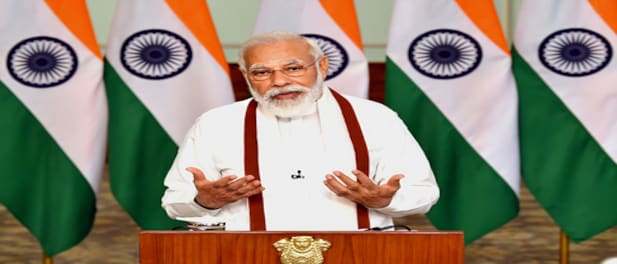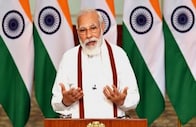While the 100th episode of Mann Ki Baat, which will be a worldwide broadcast, is awaited on April 30, 2023, the general perception is that it has so far successfully served its main purpose – establishing a dialogue with the citizens on issues of day-to-day governance– and has been instrumental in creating the much needed public awareness on many crucial government schemes, including new and innovative healthcare programmes, that otherwise do not reach the masses effectively.
Through his radio bulletin Mann Ki Baat Prime Minister Narendra Modi has stressed on various healthcare related issues, including the programmes and measures taken to bolster the health infrastructure, capacity building and access and affordability, in India. The first episode of Mann Ki Baat, which was aired on October 3, 2014, will complete 100 episodes on April 30, 2023.
The Prime Minister's talk programme, aired on All India Radio, DD National and DD News, where he addressed the people of India on various topical issues, has been an innovative communication platform and health has been an important subject in many of its bulletins.
Most of the health policies and programmes that he has spoken about on this platform have had a positive effect on spreading mass communication and mobilising the grassroots-level people to participate in the programmes. Oscillating from the advantages of vaccination to enlightening about rare genetic diseases, Modi showcased how his government has been working towards a holistic health development that caters to all.
Most of these health programmes that he chose to discuss on Mann Ki Baat have had a wide-ranging affect on the masses. Among these, he also made it a point to alert the people about implementation roadblocks, need for digital illiteracy and many corruptive practices that need to be addressed for an effective healthcare delivery.
Affordable healthcare
The Prime Minister often emphasised on providing an affordable healthcare that does not succumb to the commercial players. In one such talk he mentioned about the sustained focus on developing a pro-public health apparatus on pricing medical devices like the coronary stents and knee caps.
Modi made the bold move to curb the “unjustified, unreasonable, and irrational” trade margins of medical devices. This was a laudable effort by the government. The price cap could have been a real boon for the people as it was aimed at bring down the cost significantly in some of the procedures and surgeries.
But, unfortunately, corruptive practices is so rampant that the price reduction didn't really translate into cost saving in many cases as other expenses like ‘incidental expenses’ like the operation theatre charges and surgeon fees have proliferated eventually.
It could also deter many branded companies from selling the latest, mostly imported products and products based on imported technology. Some foreign players even moved out of the market. Questions have also been raised over the quality of the low cost devices. Allegedly, the price cap also made the R&D and innovation in medical devices 'less attractive' for many in the industry.
Insurance for the masses
Ayushman Bharat or Pradhan Mantri Jan Arogya Yojana (AB-PMJAY), which aims to provide free access to healthcare to 500 million poor and marginalised population in the country, was launched in India by Prime Minister Narendra Modi on September 23, 2018. Certainly, this insurance programme-- dubbed as the world's largest state sponsored medical insurance -- got mentioned in Mann Ki Baath several occasions disseminating its modalities and benefits to the masses.
The national health insurance scheme under the Ministry of Health and Family Welfare (MoHFW) has been facilitated through public and private hospitals, existing sub centres, health and wellness centres (HWCs) to provide cashless hospitalisation and care to poor and vulnerable households, covering their hospitalisation expenses up to Rs 5 lakh.
According to the Economic Survey 2022-23, approximately 21.9 crore beneficiaries were verified under the AB-PMJAY scheme as on Jan. 4, 2023. The same data suggests the scheme has provided about 4.3 crore hospital admissions amounting to Rs 51 crore through a network of over 26,055 empanelled hospitals across the country. About 50 percent of the beneficiaries of the Ayushman Bharat scheme were women, though the socio-economic advantage of the scheme is yet to get reflected in the society largely due to sluggish implementation, poor infrastructure and corruptive practices created several roadblocks.
The objective of decreasing the out-of-pocket expenditure on health in India which is among the highest globally has been laced with infrastructure impediments because of lack of trained manpower at the grassroots level. Other challenges include lack of motivation among tertiary hospitals to join the scheme, low awareness among the beneficiaries about their eligibility and entitlements, limited capacity in some states for effective implantation, ensuring quality of health care services by the empanelled hospitals etc.
Holistic health and telemedicine
Another important discussion in the Prime Minister's Mann Ki Baat was the holistic and digital health. India has been committed to strengthen traditional medicine practice by bolstering evidence-based research. The total allocation of budget to Ayush Ministry has increased by 20 percent to Rs 3647 crores. The budget has also emphasised on promoting evidence-based research in Ayush systems.
India has cemented its position as the leading global supplier and exporter of high-quality Ayurvedic medicine range. The annual turnover of Ayurvedic medicine production in the country had reached $18.2 billion in 2022 from $3 billion in 2014. The market size of the Ayurvedic industry has grown by 17 percent over the period.
In November 2020, the World Health Organisation (WHO) selected India to set up a traditional medicine centre to strengthen research, training and awareness of Ayurveda. One of the key factors that helped driving the Indian Ayurvedic products market is increasing popularity of natural and organic medicines and their benefits among the consumers. As per industry experts, the global Ayurvedic market is expected to grow at an exponential rate. The reason for this exponential growth can be attributed to the wide range of products that got promoted on various government and non-government communication platforms.
Increased consumer awareness, and growing focus on health and wellness promoted by the Centre through Department of Ayush and the health ministry also helped the overall industry growth.
E-Sanjeevani, a national telemedicine platform, was launched by the Government of India in November 2019. The app provides audio-visual consultation with doctor, e-prescription, SMS and e-mail notifications by the state doctors. Recently, it achieved a milestone of providing telemedicine services to more than 10 crore patients. Over 57 percent of the beneficiaries were women and 12 percent were senior citizens. According to information made available by the government, more than 5 lakh patients have been provided services through this app daily.
This programme, which filled the gap by connecting the rural doctors with specialists from urban centres besides broadening the reach of health services, also found a prominent place in the PM's communication platform.
Mobilising the vaccination programme
Through his various talks on Mann Ki Baat, the Prime Minister also educated the masses on the advantages of vaccination and following the various Covid protocols like mask and social distancing. He has appealed to the people to shun vaccine hesitancy and take the vaccination.
As per government data, more than 220 crore vaccine doses have been administered as of April 24, 2023.The initial phase of the vaccination drive was mired by fake news and rumours on the ill effects of the vaccines. Through his radio broadcast, Modi attempted to reach out to the people in the rural areas and motivate them to take the vaccines. His repeated mention of the pandemic in various bulletins helped spread the message on the ‘seriousness’ of the government to tackle the epidemic.
By giving importance to the various natural and holistic means for tackling the pandemic, Modi has also boosted employment and social empowerment.
Enlightening on genetic and rare disease
In the 95th edition of his monthly radio programme Mann Ki Baat the Prime Minister spoke about the genetic disease --Muscular Dystrophy. He lauded the efforts of a health clinic Manav Mandir in Himachal Pradesh for spreading awareness about this rare known disorder.
"The world of medical science has made a lot of progress with the help of research and innovation as well as state-of-the-art technology and equipment, but some diseases, even today, remain a big challenge for us. One such disease is - Muscular Dystrophy! It is mainly a genetic disease that can occur at any age, in which the muscles of the body begin to weaken. It becomes difficult for the patient to do even his small tasks of daily life. The treatment and care of such patients require a great sense of service," the prime minister said about the disease.
In one of his addresses, he even enlightened the people about the eradication efforts made towards Kala Azar. “The combined efforts have helped to contain the disease from 50 districts across four states to just 4 districts in Bihar and Jharkhand.”
Providing low cost medicines
The Prime Minister has spoken about the Jan Aushadhi Centres that provide medicines that are 50 percent to 90 percent cheaper than branded drugs available in the market. This is beneficial for the common man, especially for senior citizens who require medicines on a daily basis. The number of such centres have grown to more than 8,800 now and all the districts have been covered.
—The author, Dr Vanita Srivastava, is an independent science and health writer. The views expressed are personal.
Read her previous articles here
(Edited by : C H Unnikrishnan)
Check out our in-depth Market Coverage, Business News & get real-time Stock Market Updates on CNBC-TV18. Also, Watch our channels CNBC-TV18, CNBC Awaaz and CNBC Bajar Live on-the-go!







